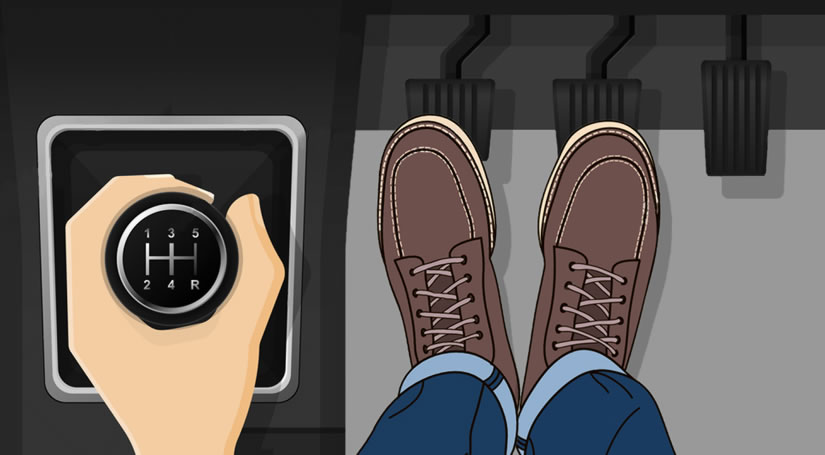Do You Have to Press the Clutch When Braking?
There are two instances where you do have to press the clutch when braking. Press the clutch when braking:
- When bringing your car to a stop
- When changing to a lower gear
When bringing your car to a stop, press the clutch down just a few metres before braking to a stop. If you’re braking whilst also changing down to a lower gear, ensure you bring the clutch up once you have completed the gear change.
Other than the two examples above, you should avoid pressing the clutch when braking.
Why Should You NOT Press the Clutch When Braking?
When driving and you remove your foot from the accelerator, your car instantly begins to slow down. This is because all the components inside the engine are still moving and it’s this friction that helps your car to slow down.
This is called ‘engine braking’ and should be used as an additional braking aid along with your car’s brakes to slow down and stop your vehicle. The benefits of using engine braking is the ability to slow down sooner and less wear on the braking system.
Your car’s brakes do a lot of work and and after a while, the brake pads and eventually the disc rotors need replacing. Your driving style is a contributing factor into how often these expensive parts need replacing, so using engine braking where possible will improve your car brakes longevity.
Can This Affect the Driving Test Result?
Yes, unnecessarily keeping the clutch pressed down can fail a driving test. Doing so is called ‘coasting’ and reduces control and braking ability of your vehicle.
Keeping the clutch pressed down disengages the the gears and the engine from the road wheels, so it’s essentially offering far less control. If you continue to do this on a practical driving test, the examiner is likely to fail your test.
